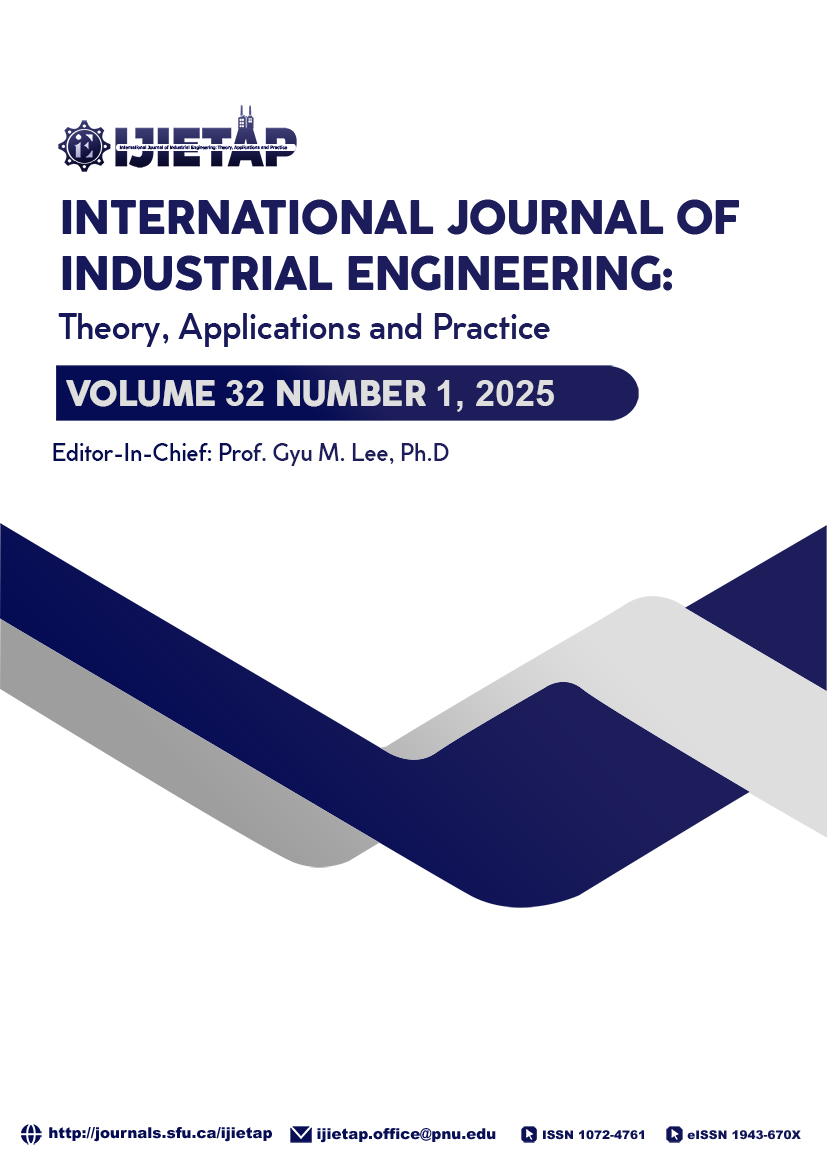Channel Coordination of Dual-Channel Supply Chain with C2M Manufacturer Introducing The Private Label
DOI:
https://doi.org/10.23055/ijietap.2025.32.1.10325Keywords:
Consumer-to-manufacturer (C2M) mode, E-commerce platform, Private label, Dual-channel, Channel coordination.Abstract
The thriving development of E-commerce platforms has injected new vitality into the C2M (Customer-to-Manufacturer) business model. However, it has also introduced a new challenger-the private label retailer. Given the escalating influence of private label retailers, the strategic introduction and coordination of the supply chain by C2M manufacturers have emerged as pivotal challenges. We analyze a C2M manufacturer's pricing strategies in three dual-channel supply chain models: centralization, decentralization, and partial centralization. In these models, the C2M manufacturer acts as a Stackelberg leader, while the private label retailer and platform act as followers. Analysis of both symmetric and asymmetric channel scenarios demonstrates that C2M manufacturers favor centralizing the supply chain. Consequently, we explore coordination strategies for Dual-channel supply chains and determine that the C2M manufacturer's contract, which incorporates wholesale and direct channel pricing, effectively coordinates the dual-channel supply, benefiting the retailer and platform but not the C2M manufacturer. We illustrate how such a contract, coupled with a complementary agreement like a two-part tariff or profit-sharing, can effectively coordinate the dual-channel supply chain, creating a win-win-win situation for the C2M manufacturer, private label retailer, and platform.
Downloads
Published
How to Cite
Issue
Section
License
The Author(s) must formally transfer each article's copyright before publication in the INTERNATIONAL JOURNAL OF INDUSTRIAL ENGINEERING. Such transfer enables the Journal to defend itself against plagiarism and other forms of copyright infringement. Your cooperation is appreciated.
You agree that the copyright of your article to be published in the INTERNATIONAL JOURNAL OF INDUSTRIAL ENGINEERING - THEORY, APPLICATIONS, AND PRACTICE is hereby transferred, throughout the World and for the full term and all extensions and renewals thereof, to INTERNATIONAL JOURNAL OF INDUSTRIAL ENGINEERING - THEORY, APPLICATIONS, AND PRACTICE.
The Author(s) reserve(s): (a) the trademark rights and patent rights, if any, and (b) the right to use all or part of the information contained in this article in future, non-commercial works of the Author's own, or, if the article is a "work-for-hire" and made within the scope of the Author's employment, the employer may use all or part of the information contained in this article for intra-company use, provided the usual acknowledgments are given regarding copyright notice and reference to the original publication.
The Author(s) warrant(s) that the article is Author's original work and has not been published before. If excerpts from copyrighted works are included, the Author will obtain written permission from the copyright owners and credit the article's sources.
The author also warrants that the article contains no libelous or unlawful statements and does not infringe on the rights of others. If the article was prepared jointly with other Author(s), the Author agrees to inform the co-Author(s) of the terms of the copyright transfer and to sign on their behalf; or in the case of a "work-for-hire," the employer or an authorized representative of the employer.
The journal does not provide the author copy of the final paper when it is published. The author(s) can make(s) a subscription to INTERNATIONAL JOURNAL OF INDUSTRIAL ENGINEERING - THEORY, APPLICATIONS, AND PRACTICE if they want to get the final paper that has already been published.
The journal is registered with the Library of Congress (ISSN # 1943-670X). All rights reserved. No part of this publication may be reproduced, stored in a retrieval system, or transmitted in any form or by any means, electronic, mechanical, photocopying, recording, or otherwise, without the prior written permission of the journal.
The author reserves patent and trademark rights and the right to use all or part of the information contained in the article in future non-commercial works.





